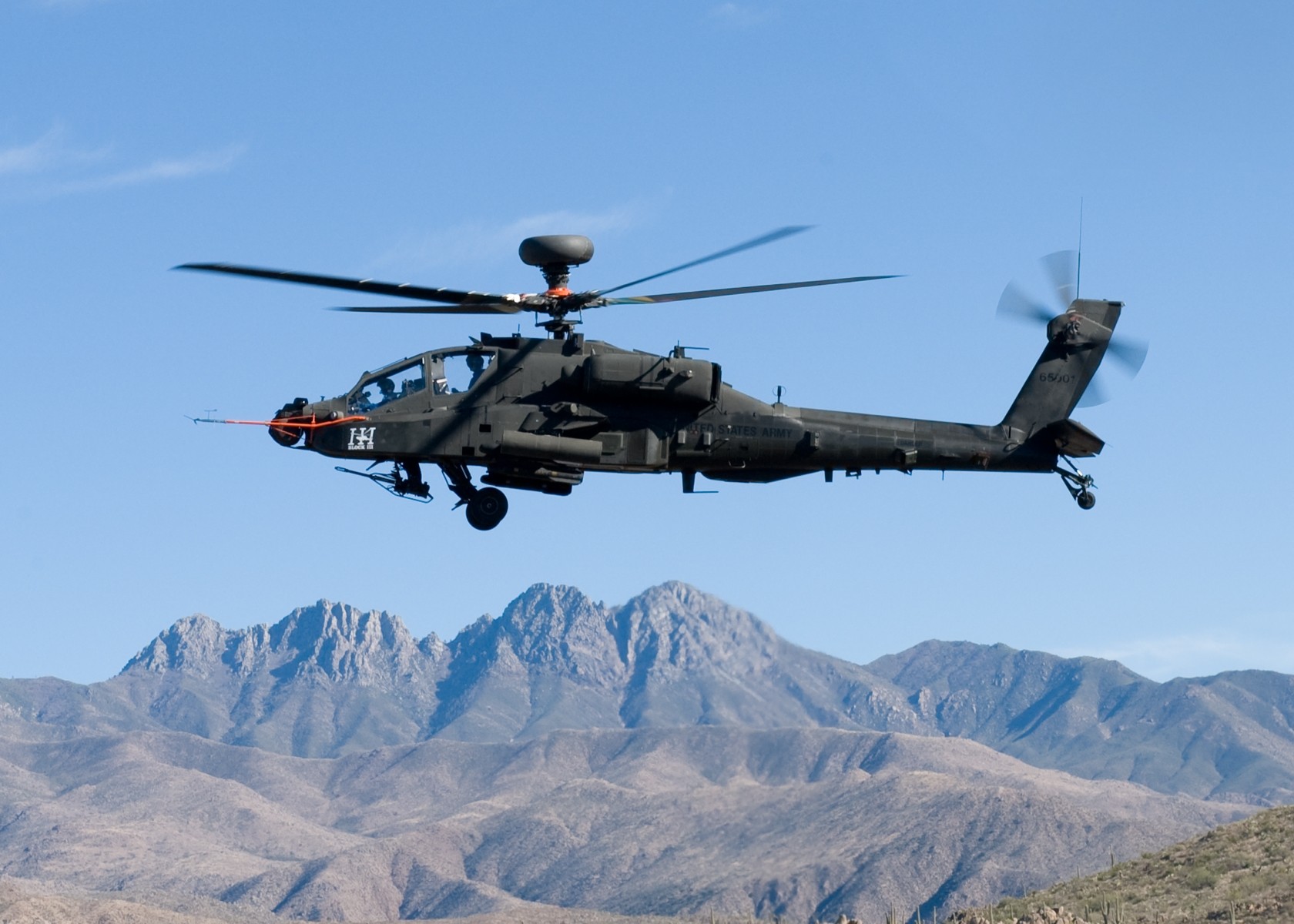The Apache Block III development team, consisting of the Army, Boeing and Northstar Aerospace Corporation, won the American Helicopter Society's Howard Hughes Award for 2009-2010 for their work on the improved drive system with split-torque face gear technology for the Apache Block III helicopter May 12.
The Howard Hughes Award is given for the most significant improvement in fundamental helicopter technology brought to fruition during the preceding year.
Consideration and vote was unanimous for the award. Additionally, 12 rotorcraft experts from government, industry and academia provided laudatory endorsements to the AHS Awards Committee in support of this nomination.
"This work, for the first time in aviation history, successfully demonstrated the Split-Torque Face Gear technology in a rotorcraft transmission and represents a truly outstanding and innovative improvement in the fundamental technology of the rotorcraft drive system," said Jerry Higman, chief of the Aircraft Branch for the Apache Block III Product Office.
"The Apache Block III helicopter needed a fairly substantial increase in power in order to satisfy the KPP (key performance parameters) requirements," Higman explained.
The key constraint however was that the increase in power might not fit in the same envelope. "What we did was to redesign the transmission and actually create and insert a new and novel technology called the split-torque face gear."
"For example, on a 10-speed bicycle, one has a combination of five lesser gears and two primary gears which your feet are actually applying the power," Higman continued.
"With the bicycle you are able to change the gear ratio, making it so you are able to apply a fairly constant torque. As you're shifting gears, you're able to go faster and faster with each gear stage."
"But for the helicopter, we maintain a constant rotor speed but the torque is changing. With a bike, we want our torque to be fairly constant, but we want our speed to change. For the helicopter, it's quite opposite. We want our speed to be constant, but the engine changes torque."
The split torque face gear approach allowed Team Apache to remove the legacy spiral beveled gear combination that is in the legacy aircraft and replace it with two counter rotating face gears to transfer that power.
The split-torque process is the redistribution of engine input torque loads within the transmission that results in fewer reduction stages, resulting in a more durable and more compact transmission.
As a result of going through a reduction in stages from four down to three is the reduction in noise, heat and friction for the same horsepower. This amounts to a 20 percent increase in overall power and a 26 percent increase in power/weight compared to the Apache's current and original spiral-bevel drive system, designed in the 1970s.
"Now our efficiency for the transmission has gone up, which is huge," Higman said. In the legacy system, the transmission operated at about 97 percent. "With the split- torque face gear, our efficiency went up about another 1 percent. That is significant."
What that means to the helicopter pilot is approximately 200 pounds more payload that the aircraft can carry, Higman said. "Significant to this feat is the fact that the transmission power was considerably increased without altering the transmission bay space or volume or changing the pylon mounting points; all possible due to the Split-Torque Face Gear technology employed in the main transmission."
"Because of our new technology that we put into the Block III, the split torque face gear, the new D power engine, and the new composite main rotor blades, we are now able to fly over and well above any mountain in Afghanistan carrying weapons and a full tank of fuel to support the war fighter on the ground."
The Howard Hughes Award was established in 1977 by Hughes Helicopters to honor the memory of Howard Hughes and his pioneering accomplishments in aviation.
The award is intended to foster accomplishments in the basic science and technology disciplines of the vertical flight community, such as aerodynamics, dynamics, propulsion, human factors, electronics, simulation, testing and systems integration.
"We're the Improved Drive System Integrated Product Team," Higman said. "I think we're living proof that the IPT concept can and does work."


Social Sharing